The Rites of Spring
an ode to spring, in three acts
There’s no time where my longing for spring is greater than in the depths of winter. I started writing this post in spring but ended up getting caught up in all the reverie (spring is an amazing time to be chronically offline). It’s officially winter, and it’s been over a month since direct light has entered my apartment.
Spring is split into 6 micro-seasons on the ancient Chinese calendar (which consist of 24 solar terms in total). For the ancient Chinese (and modern Chinese too, I suppose), spring isn’t a bucket season of a few months but a gradual progression, a ritual to undergo.
立春 The Beginning of Spring : This is the beginning of the lunar year – the Spring Festival. In ancient times, people sacrificed to the god of spring on this day to pray for a good harvest and fortune in the upcoming year.
雨水 The Rains: After the Beginning of Spring, the southeast wind begins to blow, and rain begins to increase. Chinese people tend to graft trees on this day as the rain is good for trees.
惊蛰 The Waking of Insects: This is the time when the temperatures rise. Only after this day, farmers would start to sow wheat and people would take smoking wormwood grass around the four corners of their home to drive away snakes, insects, mosquitoes, rats and musty smells.
春分 The Spring Equinox: By this day, Spring is half over and wheat is growing more quickly. Farmers strengthen the management of the wheat field and apply fertilizer.
清明 Pure Brightness: Everything is cleaned and becomes bright on this day, and people go on spring outings and sweep tombs and offer sacrifices to remember their ancestors.
谷雨 Grain Rain: This is the last solar term of spring. Due to the volume of rain, it is a good time for planting. People plant sorghum, melons and beans around Grain Rain time.
立夏 The Beginning of Summer: It is the turning point between spring and summer, and the plants sown in Spring have grown upright.1
Personally, I tend to think of spring as a three act opera – an opening, a climax, and an ending of sorts – that loosely follows the Chinese spring calendar.
立春 The Beginning of Spring
Spring opens, as one might expect, with the the spring festival (春节) – the first act of spring and the traditional start of the year in China (and much of the Confucian world). Chinese New Year is akin to Christmas (especially for me, who doesn’t celebrate Christmas). The Spring Festival signals a homecoming (the occasion is the largest annual human migration in the world), especially in modernized China where jobs are centralized in major hubs and migrants venture out into the world to make a living.
Although I don’t go back to Nanjing for New Year (flights are prohibitively expensive), Chinese New Year Eve dinner 年夜饭 is an opportunity to return to familiar flavours. For me, that’s the Huaiyang cuisine and Nanjing flavours I grew up with in my hometown.
Huaiyang cuisine 淮扬菜 is one of the Four Great Traditions of Chinese cuisine, and I would argue that Nanjing cuisine 金陵菜 (Nanjing being one of the 4 great ancient capitals) is the most prominent descendant of this sort of “official” banquet/imperial cooking.
What’s on the menu? There are few things you have to have on the dinner table for Chinese New Year that we have to cross off the list first.
Fish, because fish is a homophone for 余 in 年年有余 – meaning that there is a surplus every year
Meat, because a festive meal must be 大鱼大肉 (lots of fish and meat)
Citrus, because mandarins and other citrus fruits are considered to be very lucky




In Nanjing, we also have our own specific dishes we eat around the New Year.
My personal favourite has to be 什锦菜, or 10-scene dish. It is a traditional New Year’s specialty dish that I’ve only seen in Nanjing. Families chop up, stir fry in sesame oil and mix together a minimum of 10 different vegetables on the night before New Year’s and eat this dish through to the 10th day of the New Year.
More particular families will choose 16 or 19 kinds of vegetables. The numbers are homophones for "harmony” and “longevity". Every family will have different vegetables that go into the mix, as each vegetable has a symbolic meaning. Some that my parents like are pea leaves (a popular wild vegetable in late winter and early spring) which stand for "spring is in full bloom", celery ( pronounced similar to "diligent" 勤奋), which means "getting rich through hard work", lotus root slices which are added after their shape, which means "smooth sailing". What I love about this dish is its versatility, but more importantly that it is an edible wish for the year to come.
This year, I also chose to make 盐水鸭 Nanjing salted duck, probably the most famous Nanjing dish. I got the recipe from my mum, who makes the best Nanjing duck outside of the famous duck restaurants (although I am sure every Nanjing-er thinks their parents make the best salted duck). This dish originated from the 14th century and is the southern equivalent to the more internationally acclaimed Beijing roast duck. Experts say that autumn ducks are the best because they have a faint osmanthus fragrance, but since I only have access to frozen German ducks, I did add osmanthus flowers to the salt dry brine.
Every meal needs to end with something sweet – not a Chinese belief, but I do abide by it when cooking Chinese New Year dinners. This year, I made 桂花糯米藕 Osmanthus Lotus Root Stuffed Glutinous Rice. This is traditional dish of the Jiangnan region and wonderfully blends the fragrance of osmanthus with the crispy mouthfeel of lotus root and chewiness of the glutinous rice. The faint osmanthus fragrance alludes to the excitement of spring that’s yet to come.
惊蛰 The Waking of Insects
This is the second act of spring. The world has finally thawed and the earth has woken up from hibernation. Soon we will be hitting the climax of drama at the beginning of summer (but not yet). From the first sprouting of seedlings to flowers (and pollen) everywhere. The real essence of spring to me is the foraging – it seems like the world opens up to you everything to feast on (even though for me this is just my local park).
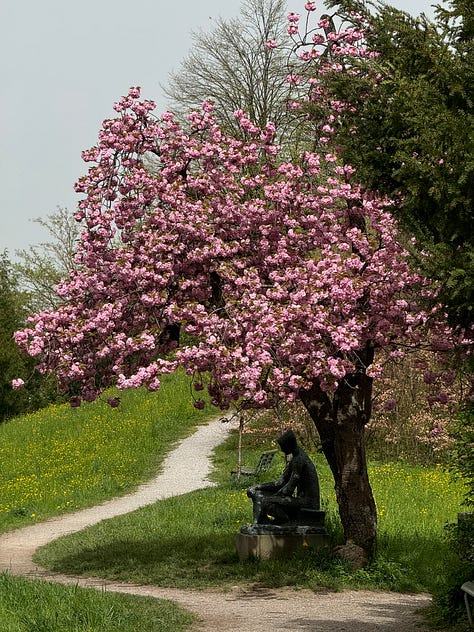


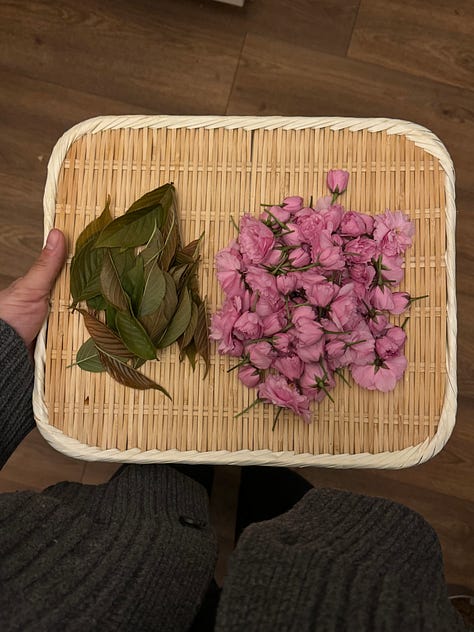
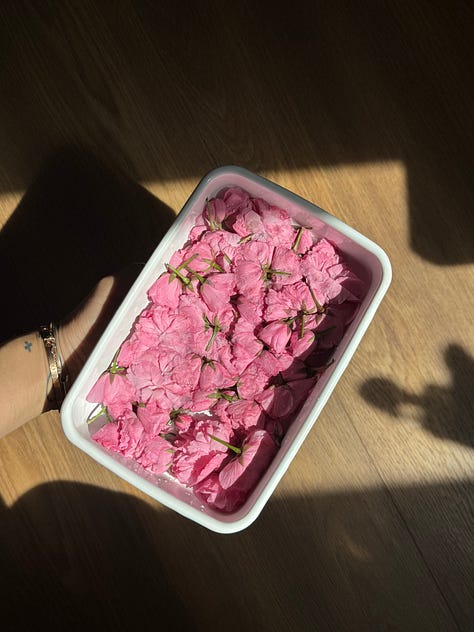
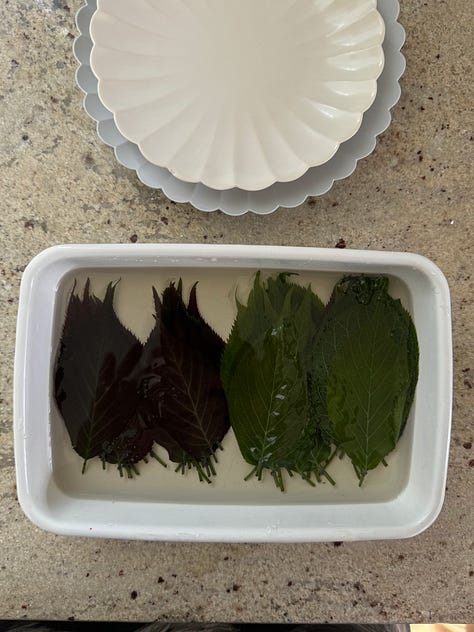
The first sign of spring is the slight smell of garlic in the air. That’s when you know that ramsons season is starting. I love ramsons because they are so easy to forage – it’s very recognizable from the smell and difficult to mistake as something else. They are so versatile – many people use them in ravioli, but I personally prefer stirfrying them with eggs or use in lieu of spring onions in a jeon.
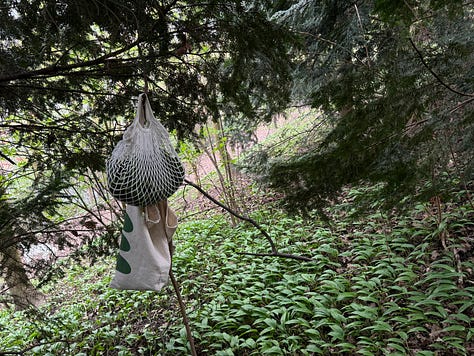




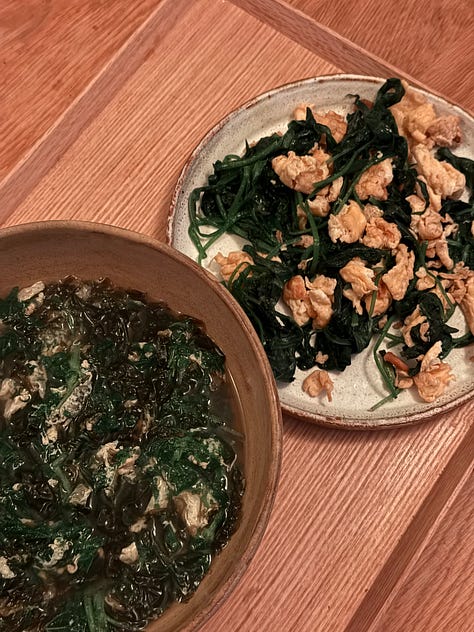
A lot of people tell me that they find the idea of foraging intimidating or out of reach, and they often don’t know where to start. There’s this notion that one need to be living in the great wilderness, but in reality, there is so much to eat all around us in our urban environment. I go to the same park twice a day to walk my dog, and it’s truly incredible the amount of edible things that can be foraged at this small park. We just need to get over our fear of eating something we picked up on the street.
Eating your local park is arguably the best way to experience spring in your locale.
清明 Pure Brightness
Since the Tang dynasty, 清明节 (or the tomb sweeping festival) has fallen on April 4/5 in the Gregorian calendar. Qingming Festival is the day where Chinese sweep tombs and pay respect to their ancesters, but it is also a day that defines a boundary on teas. 明前 (before Qingming) harvested green and white teas are considered premium and cost exponentially more than the same teas that come after. Teas that are harvested right after Qingming are called ‘guyu’ (谷雨, grain rain).
Qingming is often referred to as Taqing (踏青, tread green), which loosely translates to spring outing. This is a time when people spend time outdoors enjoying the spring and taking pleasure in the fresh blossoms. Taqing marks the beginning of a new period when the world turns green and life returns.
In the 踏青 tradition, I organized a tea meeting with some friends. There is a concept in the Japanese tea ceremony tradition called 一期一会 ichi-go ichi-e. It translates directly to “one time, one meeting”. It is a reminder that a particular gathering will never be replicated, and each moment is a once-in-a-lifetime experience. Even though the host and guests may see each other in other occasions, that one gathering can never be repeated exactly.
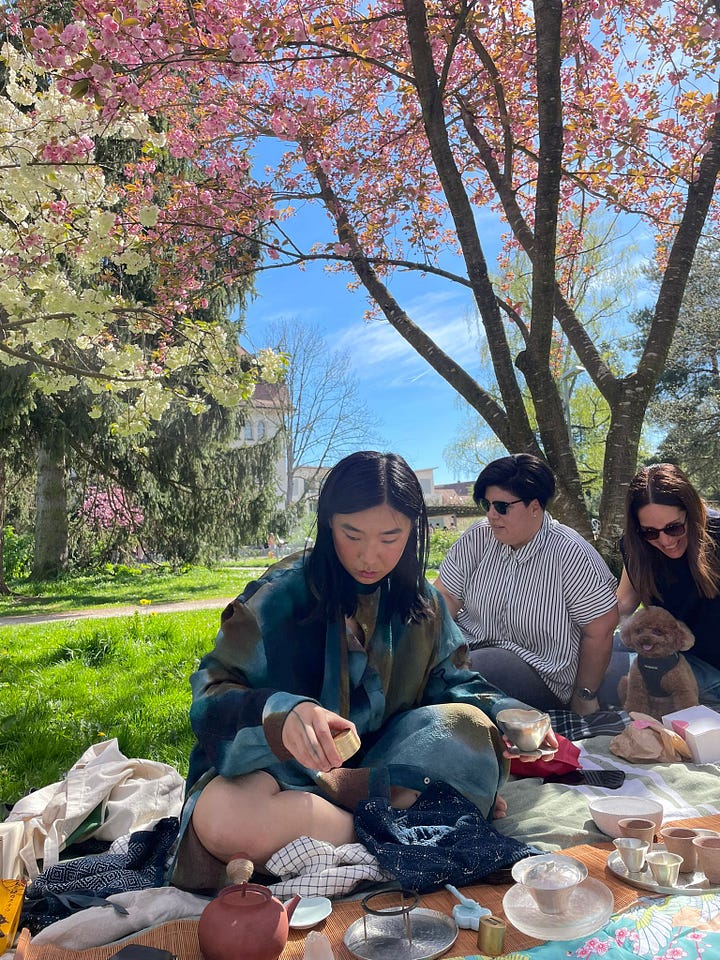
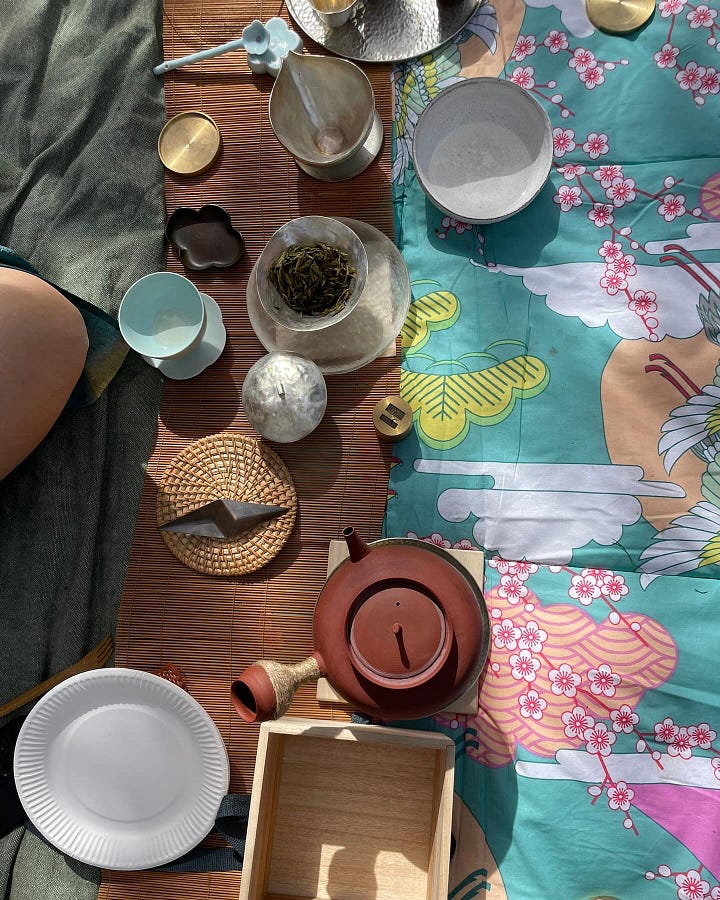
I picked a spot under two flowering sakura trees (one white, one pink) where a few friends gathered. Having a tea meeting in spring is wonderful because you can admire the blossoms while appreciating the transient nature of the meeting – the sakura blossoms will be blown away by rain in a few days time, and next year’s teas will taste completely different.
I prepared a flight of 5 different teas, starting from a fragrant pre-Qingming Longjing to roasted oolong, fresh and aged rock teas and finally pu’er. I made 凤梨酥 pineapple cake to match the rock teas. It was a wonderful way to be physically present in spring and feel just how tangible it is.
Now, only 50 days to go until spring starts again.
Excerpted from The 24 Solar Terms 二十四 节气 - Mystery Revealed





Loved the way you translated this for us, and now I can’t wait for spring! Only 50 days to go.